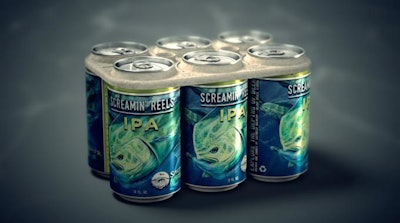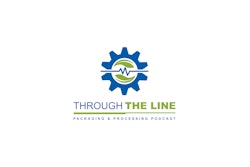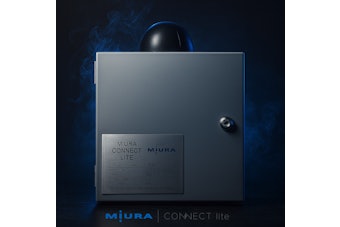As consumers become more mindful and thoughtful about making responsible food and beverage choices, packaging is following suit, according to new research from Innova Market Insights, a global market research company based in the Netherlands that focuses on the food and beverage industry. The company shared its findings about the top packaging trends for 2018 in March at Anuga FoodTec, an international food and beverage trade show in Cologne, Germany, highlighting that eco-friendly packaging, packaging that reduces food waste and portable packaging in smaller sizes will dominate the food and beverage industry.
According to Innova’s research, consumers are more concerned than ever about protecting the environment and subsequently preventing packaging and food waste. As a result, the compound annual growth rate for sustainable packaging increased 26 percent from 2013 to 2017.
Green options for packaging are going beyond recyclability to meet the sophisticated demands of eco-friendly consumers. According to Innova, about 25 percent of consumers in the United Kingdom, United States and Germany say biodegradable or compostable packaging is an important consideration when they purchase food and beverage products in order to achieve zero waste. And several food and beverage companies have responded with innovative bio-based packaging. For example, Delray, Florida-based Saltwater Brewery, uses Edible Six-Pack Rings to package and carry its beers. Conventional plastic rings pose a threat to wildlife because of the potential for entanglement and ingestion. The Edible Six-Pack Rings, on the other hand, are 100 percent biodegradable, compostable and edible. If they are not ingested, the product takes 60-90 days to disintegrate when in contact with water. Mars’ Snickers bar is another example of inventive biodegradable packaging. The candy bar is wrapped in bio-based packaging made from second-generation starch derived from wastewater from the potato processing industry.
“From 2013 to 2017, biodegradable and compostable packaging have been growing a lot. A lot of innovations in retail do have this type of packaging,” said Andrea Launay, a market analyst at Innova. “It is nowhere near mainstream. Obviously it is still niche, but it’s interesting to see it is a global niche. So we expect a lot more developers in the space.”
Another green packaging option that will come on strong in 2018 is upcycled packaging, which is packaging that can be used for another higher-value purpose. For example, Agros packages its organic teas in a biodegradable pot that can be used as a planter. The packaging comes with a seed stick for consumers to plant in the pot.
Innova says other planet-friendly packaging includes renewable containers made with plant-based PE coating, unbleached cardboard, cardboard made from tomato plant fiber and biodegradable recloseable seals. Companies like LOLIWARE are also creating edible and biodegradable cups and straws.
In addition to green packaging, consumers are seeking packaging that prevents food waste, according to Innova. Many companies have developed intelligent packaging indicators that monitor the temperature, ripeness and freshness of products. Typically their labels change color when the products ripen or spoil. For example, ripeSense sensor labels react to aromas released by fruit as it ripens. The sensor label is initially red to indicate the fruit is crisp. It then gradually changes to orange to demonstrate the fruit is firm and then to yellow to show the fruit is juicy. It lets customers choose fruits as ripe as they like it.
Innova cited LiquiGlide as another packaging company seeking to reduce food waste. Its recyclable bottles have an ultra-slippery coating that prevents viscous products like ketchup and mustard from sticking to the inside of the packaging, allowing consumers to enjoy every last drop of the product.
Consumers not only want packaging that prevents food waste, but they also want packaging that caters to their busy, on-the-go lifestyles. That’s why snacking has been on the rise for the last several years. The growing trend of “snackification” is pushing demand for portable and small-portion packaging. “We do see a lot of snackification of convenience food and beverages largely by the younger generation, the millennials,” Launay said. “They like to have little portions of things that they can just grab on the go.”
Trays with separate compartments and single-portion plastic and aluminum trays remain the most important packaging formats for consumers who want snacks and mini-meals, according to the Innova research. In addition, single-portion, transparent packaging is emerging as a shelf differentiator because consumers associate transparent packaging with a high-quality product and clean labeling, Launay said. And resealable packaging is critical for this category. Innova found that resealable packaging grew 136 percent from 2016 to 2017. “You have to make sure that your product is reclosable or resealable so that people can snack or have a mini-meal and open it later again in the day,” Launay said. “It’s convenience and there’s no food waste. That’s really paramount for this type of segment.”
Packaging isn’t just about function. It is a canvas to inform and educate customers, Launay said. Because more consumers are increasingly concerned about social and environmental issues, many CPGs are using their packaging to tell consumers how their products are sourced and made. It promotes transparency and ultimately forges strong connections with their customers. For example, a U.K. dairy producer uses its milk packaging to explain to customers that it uses only free-range cows to produce its milk.
Some of the other packaging trends that Innova says will be big this year include clean and simple designs to create a “clean label” perception. Some brands are going to rely on a handcrafted look, particularly those that use glass bottles, as well as nostalgia to resonate with younger and older customers, respectively. Many brands will also continue to use personalized packaging to capitalize on the global trend of self-expression and sharing fueled by social media. It can be a highly effective way to engage with consumers and build brand loyalty, according to Innova. And many CPGs will use technology to interact with its customers.





















